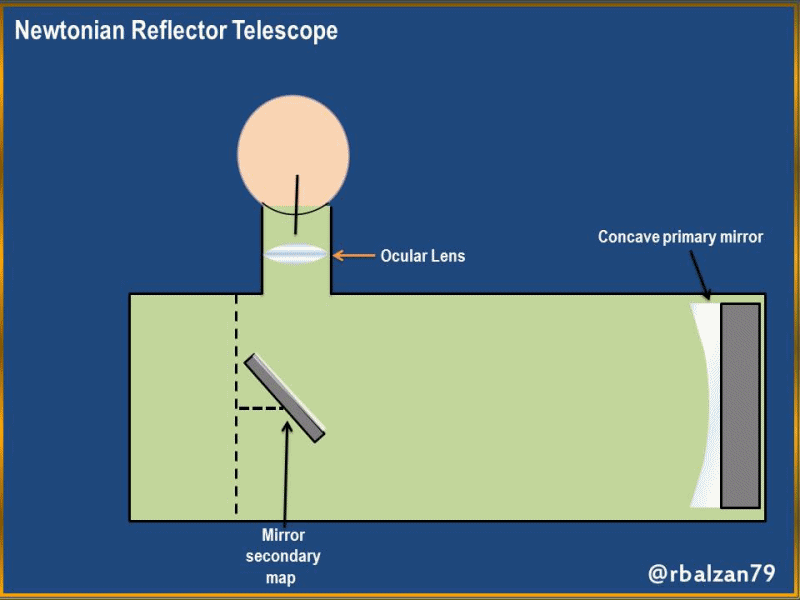The Reflector Telescope / Mirror Technology

Introduction
For the above mentioned we will continue implementing the conceptualization related to the science-technology nexus, that is, technology is applied science, and so far it has been demonstrated in each of the previous articles, where, we have related to many tools or machines that are part of our existence and that in many cases we forget the important influence that technological applications have had on them.
In the previous article we were able to relate to the refracting telescope and the implementation of some types of lenses (Convergent-Divergent) this aspect characterizes its name, the lenses manage to refract or bend the luminous rays coming from any object or body of our universe and with it the generation of the essential images that arrive at our retinas, mainly of our outer space.
In this opportunity we will relate to the reflector telescope and its implementation of mirrors (flat, concave and convex) hence its name since the mirrors manage to carry out the phenomenon of the reflection of the luminous rays, that is to say, when these rays manage to impinge or collide on these polished surfaces they are reflected and in this way they leave shot towards the medium where the body or object emitting these rays is located, and in this way we can make the reflection continuous as many times as we wish.
The Newtonian reflecting telescope
This type of telescope is called this way because it has mirrors instead of lenses, and this way when treating the luminous rays it will do it from the point of view of the principle of the reflection, and thus to be able to focus the light that transports the image that we want to observe, inside this instrument we can find a curved mirror which is called primary concave and the same is at the bottom of the cylindrical tube component of this instrument, and we also have the presence of a small flat mirror which is placed diagonally in order to achieve reflection of light rays to an ocular lens arranged on one side of the optical instrument as you can see in the following figure 1.
Figure 1. Mirrors inside the Newtonian reflecting telescope
If we link with some history we can express that the name of the Newtonian reflecting telescope is due to the fact that the first device for observation and light treatment of this type with mirror was made by that great character of our history as it was the great Sir Isaac Newton, and throughout history other models of these reflecting telescopes were designed such as the Cassegrain focus, Coudé-Cassegrain focus and primary focus, it is important to emphasize that this optical tool was conceived as an alternative to the refracting telescope since the latter due to the use of lenses generated chromatic aberrations point treated in a general way in previous articles.
Conclusion
The mirrors are particular or simple optical components of great utility in various areas of our lives, and especially for the understanding of the generation of images by treating the luminous rays components of our white or visible light, where the phenomenon of reflection plays an important role as we noted in the Newtonian reflector telescope, but are countless applications given to the mirrors of different geometric shapes.
The geometric structures of these mirrors will always depend on the application that you want to give, that is why sometimes we can find flat and curved mirrors, the latter can be concave or convex, inside the telescope shown we could visualize a flat mirror and a concave curved one, a practical and remarkable application of mirrors is in cars which through them we can observe what happens behind us thanks to the phenomenon of reflection that manages to direct those light rays towards our eyes, among many other applications, where scientific-technological advances have played an essential role.
Until another opportunity my dear and appreciated readers.
Note: The images are of my authorship, made using the Power Point application, and the animated gif was made with the Photoscape application.
Recommended Bibliographic Reference


Within all mirrors and glasses are great inventions that served so that these master minds could reach much further.
Thank you for sharing this series of publications @rbalzan79
Greetings friend @josevas217, it is true that behind the mirrors there are countless discoveries that have allowed us to develop great instruments, thanks to your excellent contribution. Successes.